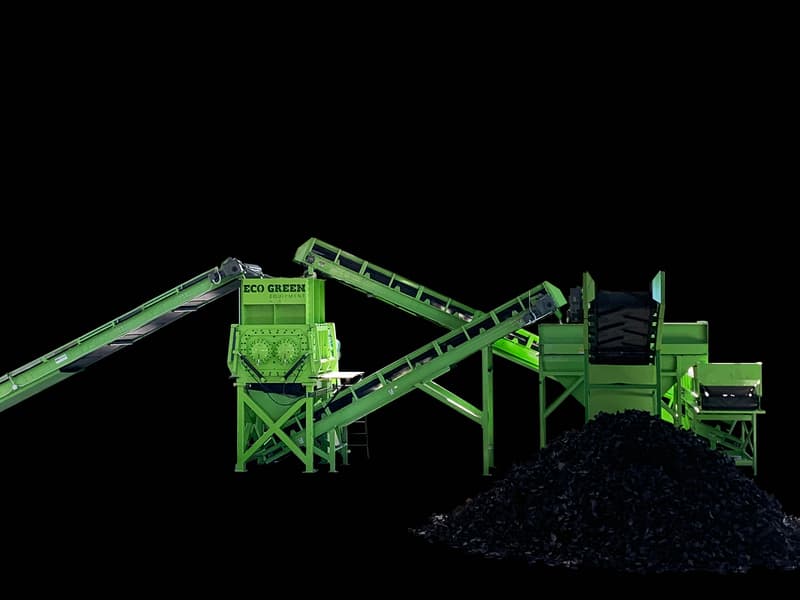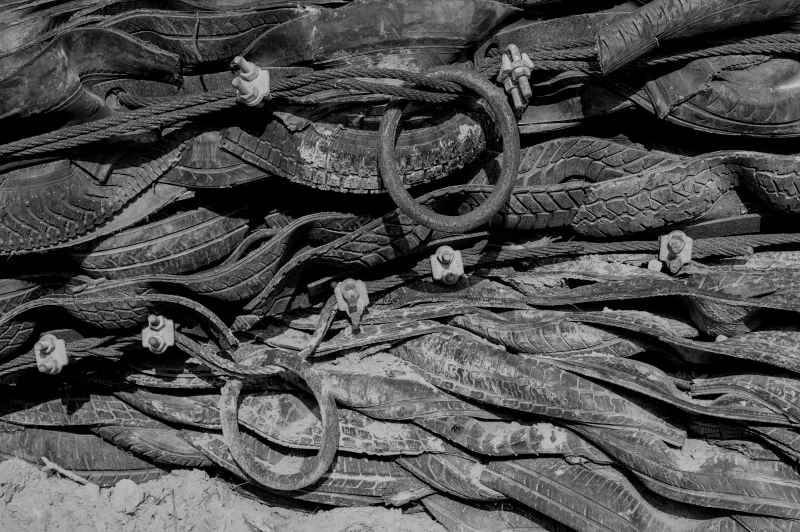The number of scrap tires disposed of in landfills across the country each year is decreasing thanks to innovations in recycling and energy production. According to the Environmental Protection Agency (EPA), the best way to reduce tire waste is to follow the adage to “reduce, reuse, and recycle.” However, waste tire recycling is currently not keeping up with the amount of waste being produced. A survey performed in 2017 concluded that 43% of scrap tire was being converted into tire derived fuel (TDF). This is a significant start, but more progress is needed. Rather than sending all these tires to landfills or allowing them to pile up in vacant lots, using these spent tires to produce energy is a highly beneficial option.
What is Tire Derived Fuel?
Tire derived fuel (TDF) is a mixture of shredded tires, usually 1 to 3 inches in size. The rubber shreds are most commonly mixed with wood, coal, or chemical waste before being burned. TDF is burned as a supplement to a plant’s primary source of fuel. Before the shredded rubber can be used as fuel, however, the metal wire must be removed. Wire left embedded in the rubber can clog up machinery and add unwanted iron to the ash produced in the burning process.
Thus, most TDF is 96+% free of metal tire wire.
Where is Tire Derived Fuel Used?
- Concrete Kilns
Nearly half, or 46%, of the TDF produced in 2017 found its way into cement manufacturing facilities where it was burned in kilns to produce gypsum for concrete mix. Scrap rubber is an especially good source of fuel here for two reasons. First, cement manufacturing requires some iron. Thus, the tire wire does not need to be removed before being burned in the kiln. Second, some cement kilns can accommodate and burn whole tires. Thus, cement plants do not incur the cost of shredding the tires or removing the wire to make it into a useful product.
- Pulp and Paper Mills
Producing pulp and paper requires a unique set of conditions. The mills need high heat temperatures and low moisture content. The fuel of choice for these plants is wood. However, different pieces and batches of wood have varying water content. Rubber tires, by comparison, consistently burn hot and have a low moisture content. By adding rubber chips to the wood, mills can produce a hotter and drier fire.
The ash produced in paper mills is often sold to farmers who do not want added iron in the product they buy. Additionally, the presence of too much wire in the TDF clogs up the fuel feed systems. Consequently, TDF burned in paper mills must be wire-free. Removing the wire makes the TDF 50% more expensive than comparable TDF that contains wire.
- Electric Utilities
Most electric utility companies burn coal to produce energy for their customers. However, many boilers can accommodate tire derived fuel as well. It increases the burning temperature and produces fewer nitrate emissions than coal. It is also comparable in price to coal. The type of TDF that can be used depends on the type of boilers used by the company. Some boilers require smaller rubber chips than others, and all require wire-free chips. Smaller wire-free chips require more processing, increasing the cost to the utility company for the raw product.
- Dedicated Tire to Energy Facilities
The first facility to produce energy directly from tires was built in Sterling, Connecticut. Exeter Energy Limited served the states of New York and New Jersey. The plant could burn 10 million whole tires each year. In this unique case, the rubber was not mixed with a secondary fuel when burned, eliminating the need to burn fossil fuels such as oil, gas, or coal. The energy produced was sold to local utilities to power local homes and businesses.
While the Exeter plant is no longer operating as a tire-only energy plant, there is another plant in Westley, California. It is located near one of the largest tire piles in the United States. The pile, which at its peak held 30-40 million tires and covered ½ mile in width and 1 mile in length, was a hazard. The plant, built by Oxford Energy, came with a price tag of $40 million. It burns whole tires and can produce 15.4 megawatts of energy per year.
The cost and time required to build such a plant are daunting. As Oxford owns exclusive rights to the technology that they use in their plant, it is unlikely that other companies will branch into this market at this time. Oxford Energy does have plans for additional tire burning plants in Connecticut, New York, and Nevada. Only time will tell if this model for dealing with tire waste will catch on as an alternative fuel source.
Is Tire Derived Fuel Clean to Burn?
When you consider the emissions, the question of whether TDF is better for the environment than burning traditional fuels is the subject of much debate. The debate centers on the presence of chemicals known as dioxins, furans, and zinc in the flue gases from plants. Multiple studies performed on the gases produced in these plants have yielded results that have been inconsistent at best. These results have led to a lot of confusion on the topic.
There are a few things that we do know, though. Except for zinc emissions, the EPA believes that the emissions closely resemble those produced by burning fossil fuels. Tire derived fuel produces as much energy as burning petroleum and 25% more energy than burning coal. More energy produced with the same emissions puts us ahead from the start. The ash by-product of burning TDF can contain lower levels of toxic heavy metals than you get from burning some types of coal. Burning TDF also produces less ash, reducing the carbon footprint for the whole process.
More research into the by-products of burning tire derived fuel is needed. However, the truth remains that burning tire rubber instead of fossil fuels to produce needed energy helps remove tires from landfills and preserve our natural resources, and that’s hard to argue with.




